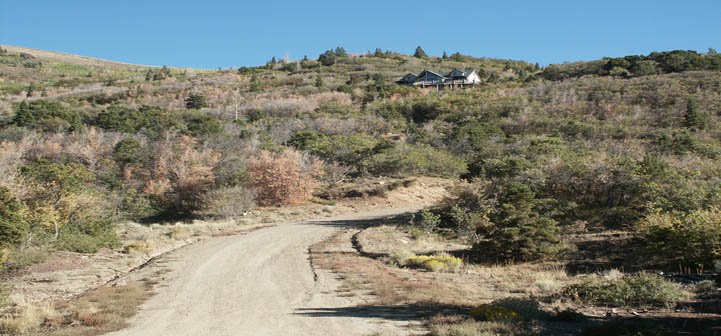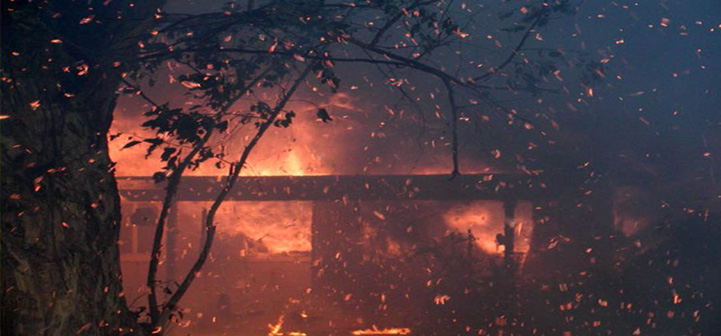
If there is a wildfire in your area you may need to get out and firefighters may need to get in, so build fire safety into your road or driveway designs and make plans for evacuation and access.
First, the road. Having more than one way into and out of a residential area is good in case one road gets blocked. Roads should be at least two lanes wide, with gentle curves and with enough space at the end for a firefighting vehicle to turn around. This can take at least a 45 foot radius circle, or a 60 foot wide ‘T’. Narrow, windy, steep, or vegetation-choked roads will be difficult or impossible for firefighters to navigate. Roads that are difficult or dangerous to drive on in a car when there is no fire may be impossible to use for safe escape or for access by firefighting equipment. If you don’t have control of road placement or design you may need to talk with your homeowners’ association or town officials to see what can be done.
The same goes for a driveway into your property. Long, narrow, vegetation covered driveways without turnarounds may block firefighter access and your escape. Keep driveways short and open, provide a large turnaround at the end, and make sure that all parts of the property can be accessed by firefighting equipment.
Firefighters need to be able to find your property or neighborhood in the event of a fire. They may have a street name or property address but that won’t do much good without good signs. Make sure that street signs and house numbers are large, visible, reflective, readable in the dark, and not obscured by vegetation. All address and street signs should be non-combustible. Post your house number at the end of the driveway if your house is not easily visible from the road.
You and your community also need to have an evacuation plan. Check with your local emergency services office, fire department, or law enforcement agency to see if your community has an evacuation plan and if so, what is planned for your area. Do not wait until a wildfire occurs to attempt to obtain this information as fire and emergency services will be extremely busy. If your community does not have an evacuation plan, meet with your fire department about creating one. There is a good chance that creating a plan will point out weaknesses in access to your community that can then be addressed.
Your family fire plan should include plans for what you will take with you in case of a fire and what route you will take to safety. You also need to know how you will contact each other, and where you will meet in the event of a fire. Practice home fire drills. Post the fire department phone number and other emergency numbers where they can be found quickly in the event of a fire.
Article Written by:
Michael Kuhns, Utah State University, Logan, UT
